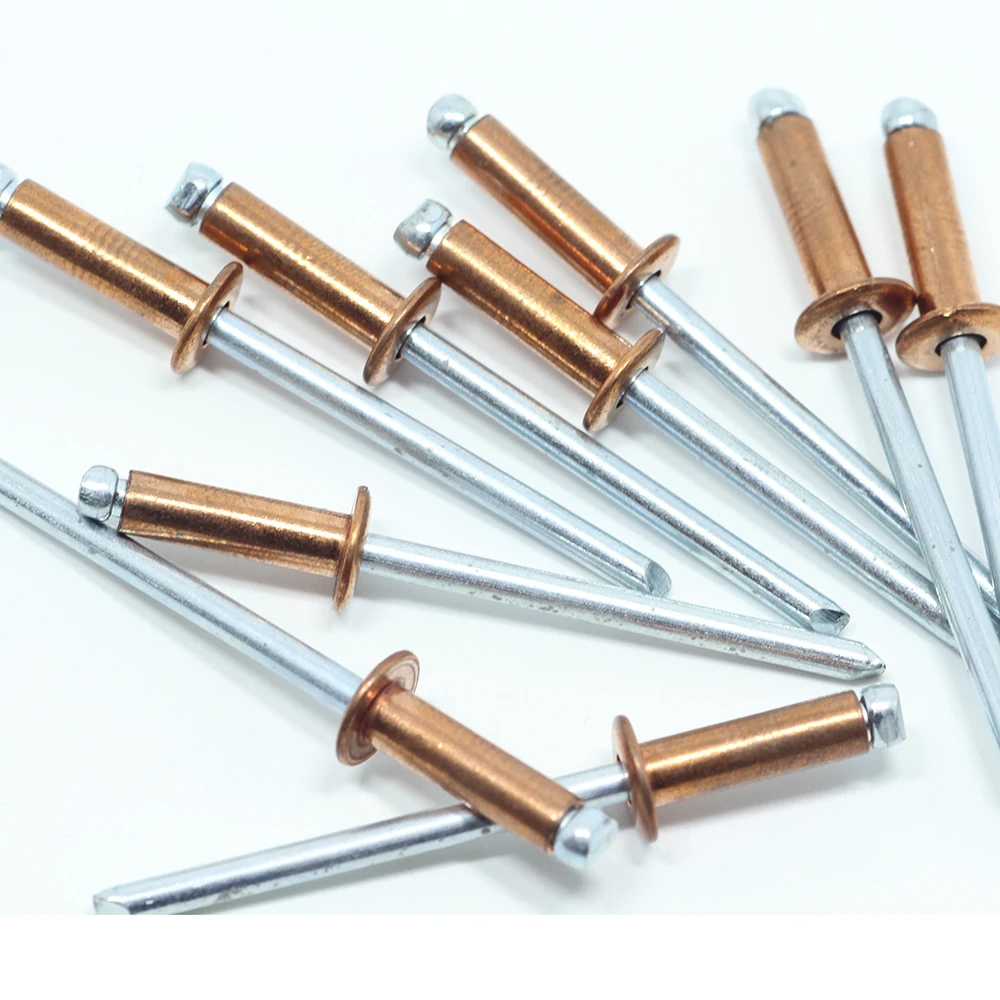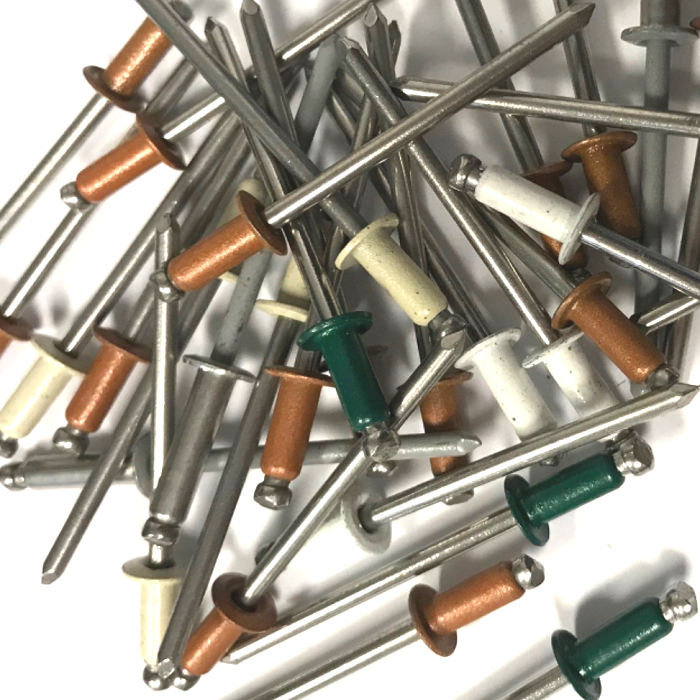
The end of a rivet’s shaft, which is formed into the shop head is called the tail. The factory head is similar to the head at one end of a bolt while the shop head is like a nut, which forms a temporary head at the other end of a bolt. Another head is formed after insertion and it’s referred to as the shop head. The benefits are their ability to resist vibration and can secure joints with short clamp lengths.Ī rivet has a pre-formed head at one head, called the factory head. They are, therefore, designed for permanent or semi-permanent joints, fulfilling the same role as structural adhesives or welding. However, while nuts can readily unscrew for disassembly and reassembly, typically rivets are broken or damaged before removal. The function of a rivet is similar to that of a nut and bolt. The heads prevent axial movements of the parts, although less force is supported in this way. The shaft prevents any radial movements of the components.ĭepending on the type of rivet, and its ability to support shear load, it can resist considerable forces. A permanently formed head at each end prevents the rivet from being removed from the hole. How do Rivets Work?Ī rivet is a mechanical fastener with a plane unthreaded shaft that’s inserted through holes to join two or more parts together. However, it is much more capable of supporting shear loads (loads perpendicular to the axis of the shaft).įastenings used in traditional wooden boat building, such as copper nails and clinch bolts, work on the same principle as the rivet but were in use long before the term rivet was introduced and, where they are remembered, are usually classified among nails and bolts respectively. To distinguish between the two ends of the rivet, the original head is called the factory head and the deformed end is called the shop head or buck-tail.īecause there is effectively a head on each end of an installed rivet, it can support tension loads. In other words, the pounding or pulling creates a new “head” on the tail end by smashing the “tail” material flatter, resulting in a rivet that is roughly a dumbbell shape. On installation, the rivet is placed in a punched or drilled hole, and the tail is upset or bucked (i.e., deformed), so that it expands to about 1.5 times the original shaft diameter, holding the rivet in place. Rivets are used to join large structural members, small electronic assemblies, and just about any manner of part falling between these extremes. Hold the drill straight over the rivet and drill it to push it out entirely, being careful not to widen the surrounding hole.A rivet is a permanent mechanical fastener consisting of a head at one end and a cylindrical stem at the other end (called the tail) which has the appearance of a metal pin.Switch out your drill bit for one the same size as the rivet.Bore a hole with a drill bit considerably smaller than the rivet all the way through the center of the fastener, creating a pilot hole.Use the hammer and punch to pierce a tiny divot into the top of the rivet to act as a groove to keep the drill in place.You may need to approach the head from several sides to do away with it entirely. Hover with the tool so that you touch nothing other than the rivet head itself.Approach the rivet’s head while keeping the wheel of your grinder parallel to the surrounding surface.

Technique 2: Go with a GrinderĪ steady hand, patience, and concentration will certainly help the process, too! Then simply adjust your drill depth accordingly and drill out the rivet neatly. If you already have one but lack the right sized bit and guide to fit the rivets for a job, you can likely find them at your local hardware store.Īttach the tool to the opening on your power drill and place the appropriate bit onto the end, fastening it securely.

The tool comes in a set with various guides and drill bits in different sizes ( view example on Amazon).


Though they run about $50 to $75, a rivet removal tool that fits onto your power drill might be a smart investment if you’ve got to get rid of many rivets.


 0 kommentar(er)
0 kommentar(er)
